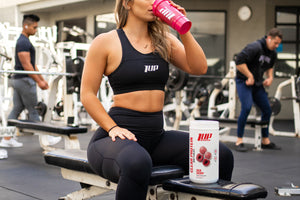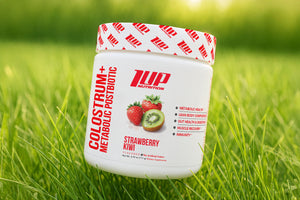Recovery is an important (if overlooked) aspect of getting results from your workout program. But, if you want to get the best results possible as quickly as possible, then you must take your R&R as seriously as you do your workouts and nutrition.
Let’s discuss the power of recovery.
Why Recovery Is Important for Getting Results
Allows Time for Repair & Growth
This may come as a surprise to many of you, but your muscles don't actually grow while you’re working out. Intense exercise (HIIT, resistance training, etc.) actually damages muscle fibers and creates microtears in them.
To repair and grow stronger, your muscles need rest and recovery. Failure to give your muscles the rest it needs will limit adaptations (“results”) and can lead to frustration and seeming like you’ve plateaued, when in reality all you need is more recovery.
Reduces Mental & Physical Stress
As we just mentioned, intense exercise beats up your muscles. It also stresses your central nervous system.
Proper recovery helps you to mentally and physically recharge, lower cortisol (stress) levels, and rekindle your motivation to train hard when it’s time for your next workout.
Prevents Overtraining
Overtraining results from too much exercise-induced stress coupled with too few recovery days. This can lead to sprains, strains, and overuse injuries as well as increases in body fat, decreased sex drive, and poor mood.
Taking your rest days seriously helps to combat overtraining/under recovery symptoms, thereby allowing you to train more frequently and with greater intensity so that you can continue to get results!
What to Do on Rest & Recovery Days?
Two Types of Recovery
There are two types of recovery you can do on a recovery day: passive recovery and active recovery.Passive recovery involves taking the day entirely off from exercise.
Active recovery occurs when you perform low-intensity exercise, such as walking, hiking, yoga, foam rolling, etc. This low-level activity helps to increase circulation which delivers additional recovery nutrients (protein and carbohydrates) to tired muscles, remove waste metabolites that accumulate during intense training, and burn additional calories.
It’s up to you to decide which type of recovery you choose to implement on a given day. One day per week can be passive recovery and another can be active recovery. Go by how your body feels and what your schedule allows.
In addition to active and passive recovery practices, here are some other important things to maximize the power of recovery days:
Get Enough Sleep
The impact of sleep on recovery and results can’t be emphasized enough.
Sleep is the time when the body does the vast majority of its recovery and repair. Even a single night or two of poor sleep can impair recovery by increasing cortisol levels, reducing muscle protein synthesis, and impairing nutrient partitioning. Lack of sleep also reduces energy levels, motivation, and performance, which can further undermine your results.
Basically, you must make sleep a priority. Here are some sleep hygiene pointers to help you sleep better at night:
- Having a consistent bedtime
- Establishing a pre-bed ritual
- Avoiding blue light exposure (tablets, LEDs, smartphones, computers, etc.) 1-2 hours before bed
- Restrict/avoid acute stressors before bed (text messages, social media, news outlets, etc.)
- Listening to calming music
- Avoiding caffeine/alcohol close to bed
- Taking a warm bath/shower
- Stretching/light yoga
- Journaling/meditating/praying
For additional help improving nighttime recovery and quality sleep, you may also want to consider a PM relaxation and recovery supplement, such as Recharge PM, Beauty Dream PM, or 1UP Relax.
Fuel Your Recovery
Protein is the most important macronutrient when it comes to improving body composition (muscle growth, fat loss, etc.). On training and rest days, protein intake should remain consistent. A general rule of thumb is 1 gram of protein per pound of body weight. This can be achieved through a combination of “whole foods” (beef, chicken, pork, eggs, dairy, etc.) as well as protein powder, such as whey protein, egg white protein, vegan protein, or clear protein.
Carbohydrates are also important for muscle recovery (yes, even if you’re trying to lose weight) as they help to decrease cortisol levels, stop muscle protein breakdown, and replenish glycogen levels. Fast-digesting carbohydrates, like those contained in Tri-Carb, are ideal for intra and post workout shakes. For your other meals, prioritize “slow” carbohydrates like fruits, vegetables, whole grains, legumes, nuts, and seeds.
To help make sure that you’re consuming the right amount of calories and macronutrients for your goals, log into the 1UP Fitness App, which allows you to quickly and easily track your food intake. You’ll also gain access to our private Facebook group where you can interact with other like-minded individuals and receive encouragement and support to help you maximize your results.
Takeaway
While we tend to focus on training hard and eating right to get results, many of us overlook the power of recovery and time away from the gym. But, it’s only when we take the time for R&R that our bodies improve and grow.
Recovery not only plays a key role in getting results during your transformation challenge, it also helps to support better future performance, reduce the risk of injury, and improve motivation.






